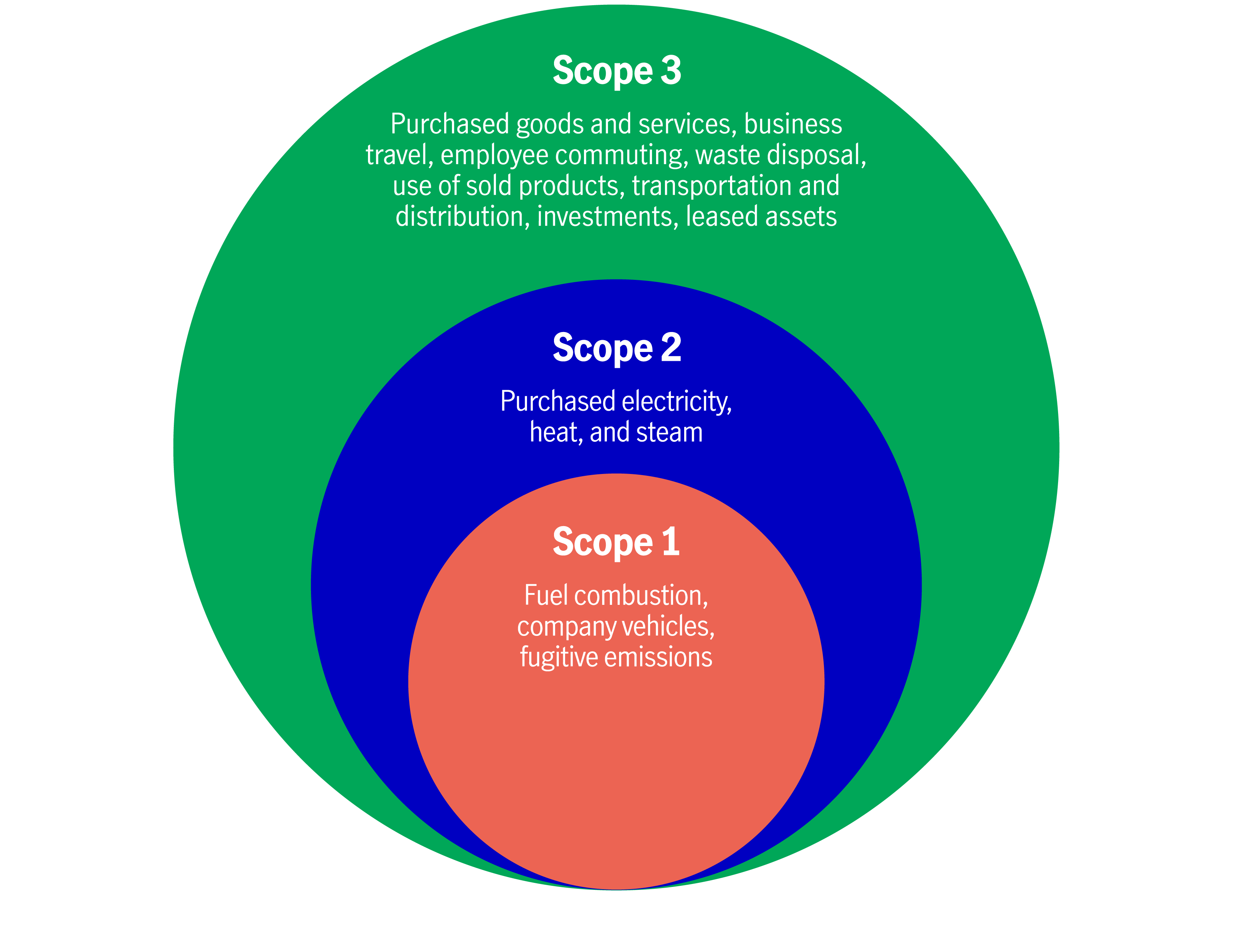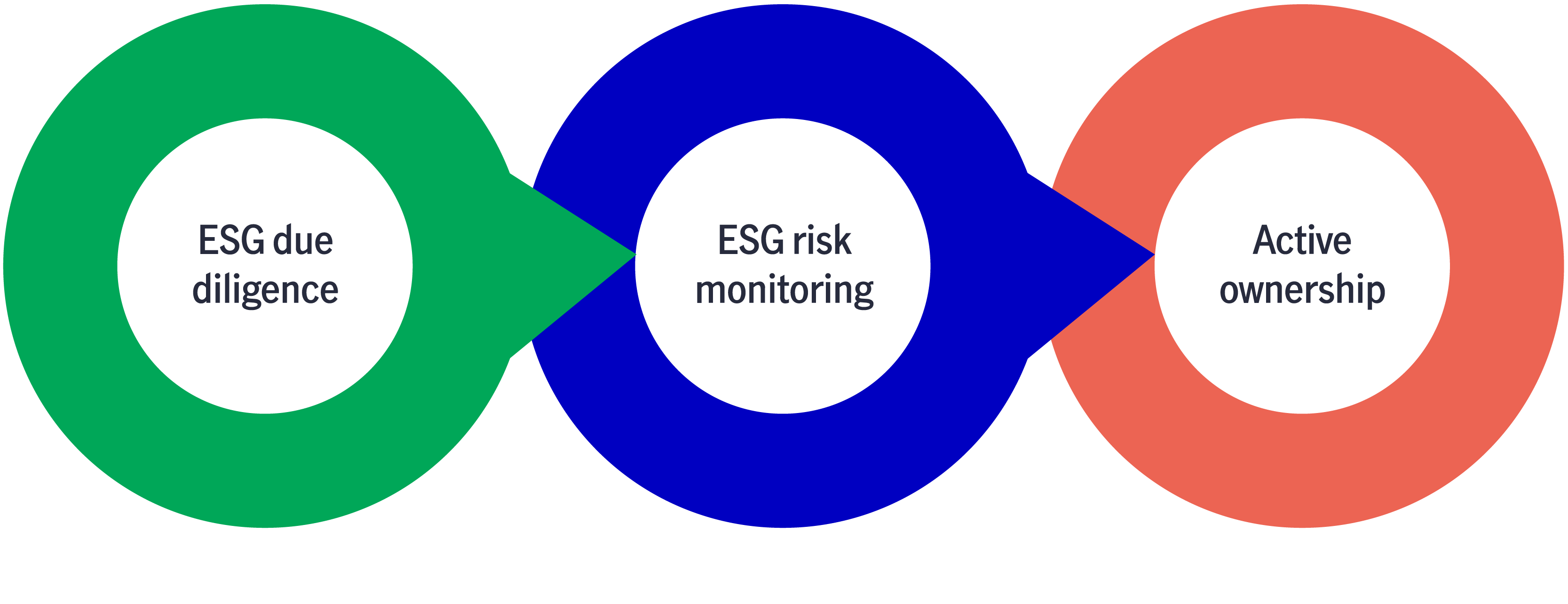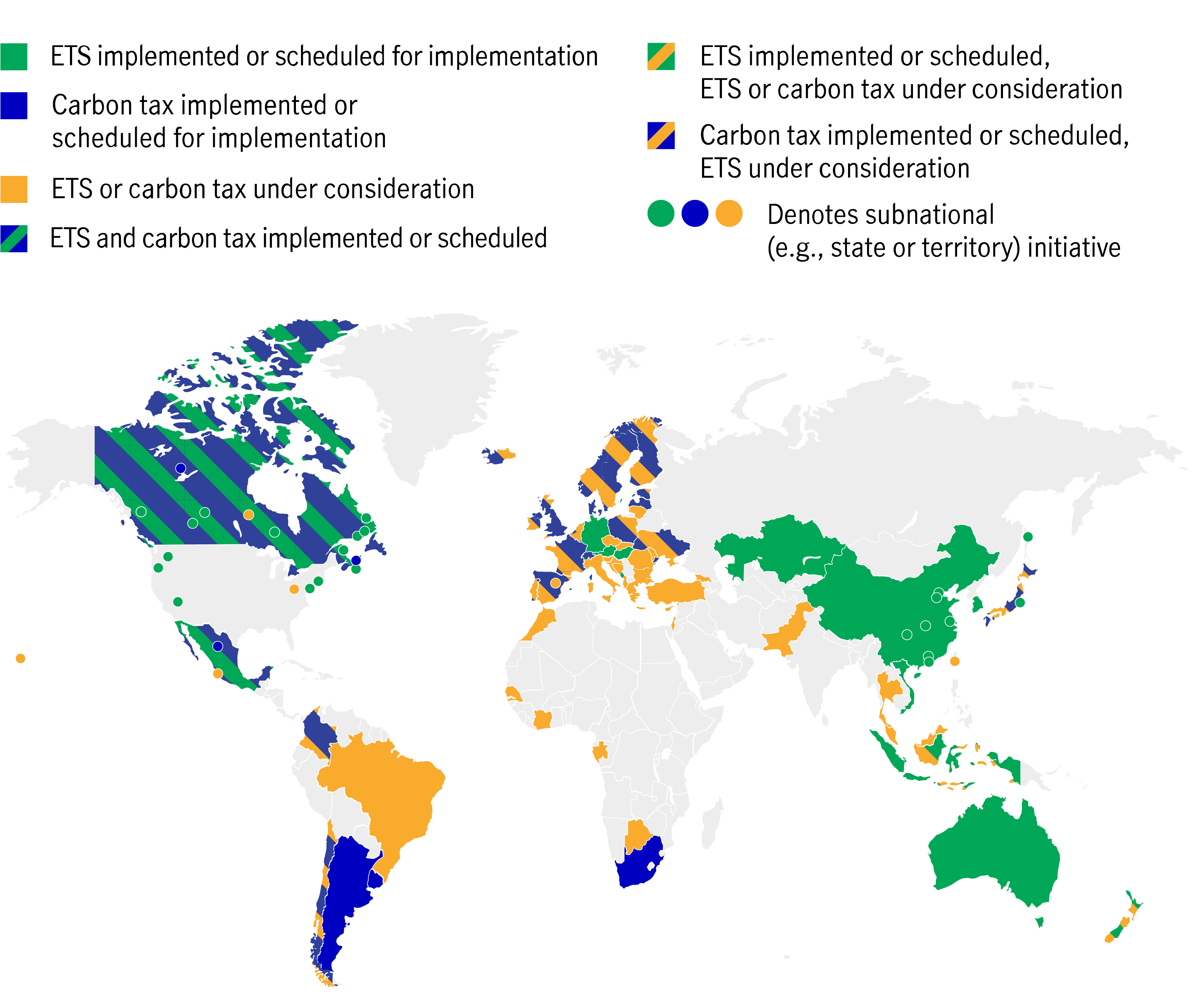
6 October 2023
Not so long ago, environmental, social, and governance (ESG) considerations were only an ideology that many investors wrongly associated with sacrificing returns. Today, they‘re broadly integrated across asset managers’ investment processes, and we believe they can help our planet while also aligning with the clients’ financial and sustainability objectives.
The growth of ESG assets and the number of players and stakeholders has been so fast in the past six years1, however, that it can be easy to get lost with the extensive terminology. Knowing the terms and actors in the ESG world is key. That’s why for ESG-focused investors, we list the key definitions below:
The goal of both negative and positive screening is to help build portfolios by either excluding or seeking out investments that meet a certain set of criteria—for example, a minimum percentage of independent members who serve on the board of directors, or a maximum of greenhouse gas (GHG) emissions. In other words, these screenings help investors put their money where they want to have an impact.
Negative screening means excluding entire sectors, industries, or regions that score badly from an ESG standpoint. This often means excluding certain industries such as tobacco, weapons, and alcohol. Negative screening can also take place at the company level, excluding certain companies that score below specific levels on ESG matters.
On the other hand, positive screening is the process of comparing companies within a given sector and targeting businesses with superior ESG standards versus their industry peers. Positive screening could mean including companies from ESG-unfriendly sectors, but only the best performers (e.g., an oil company with the lowest carbon footprint amid oil producers), or the ones with the potential to improve significantly and contribute to a healthier future.
Investors can only best assess which companies they want in their ESG portfolios when they have access to the right data. SASB is a non-profit organization whose goal is to guide public companies in their sustainability reporting by identifying key ESG issues most relevant to financial performance in their respective sectors. Overseeing 77 industries so far, SASB developed sector-specific sustainability accounting standards that ultimately help investors compare companies from an ESG standpoint and make better-informed decisions.
The term net zero means that the amount of greenhouse gas emissions produced by a region or a company is offset by the amount of GHG that they remove from the atmosphere. The majority of countries—including the biggest polluters, China and the United States—have pledged to reach net zero in the next decades. Reaching net zero is widely viewed as key to combatting climate change.
Scope 1, 2, and 3 are categories for an organization’s greenhouse gas emissions. Scope 1 refers to direct GHG emissions from company-owned sources (e.g., fuel combustions in vehicles and factories, and fugitive emissions). Scope 2 encompasses indirect emissions associated with the purchase of electricity, steam, heat, and cooling needed by the company to operate. The two reporting methods of Scope 2 emissions are the market-based method, which is based on the electricity that a company purchases and its use of green energy tariffs such as Renewable Energy Certificates, and the location-based method, which measures how much emissions are physically put into the air based on the company’s average emission intensity from its power grid. Scope 3 covers all indirect emissions linked to the company’s operations that aren’t included in Scope 2. There are upstream Scope 3 emissions which come from the production of a company’s products or services, while downstream emissions come from their distribution, use, maintenance, and disposal. From employees’ business travel and commute transportation to waste management, Scope 3 is the hardest to assess, yet in most cases, it represents the biggest GHG impact.
Scope 1, 2, and 3 emission example

Source: Manulife Investment Management. For illustrative purposes only.
For an investment firm, stewardship is the careful and responsible management of its clients’ assets. We believe marketwide stewardship includes encouraging the development of robust regulation, building global sustainability standards, collaborating with peers to address systemic issues, improving the data environment, and building sustainability literacy.2
Backed by the United Nations and founded in 2006, the PRI is a list of six ESG-focused principles that signatories have committed to follow. Playing a large role in the promotion of responsible investment practices, the PRI’s more than 5,370 signatories3 (combining for more than US$121 trillion of assets under management4) acknowledge that “environmental, social, and corporate governance (ESG) issues can affect the performance of investment portfolios,” and that “applying these Principles may better align investors with broader objectives of society.”5
The Paris Agreement is an international treaty on climate change adopted by 196 countries at the Conference of the Parties (COP) 21 in Paris in December 2015. Entering into force on November 4, 2016, its goal is to limit global warming to 2 degrees Celsius while aiming for 1.5 degrees Celsius (compared to pre-industrial levels). The agreement includes commitments from nations to substantially reduce greenhouse gas emissions—commitments and plans are reviewed every five years during the Conference of the Parties annual global climate summit. This five-year cycle, which started in 2015 with COP 21, is the reason why COP 26 drew significant attention in 2021, and in all likelihood, so will COP 31, COP 36 …
The 17 Sustainable Development Goals reach beyond climate action to ultimately achieve a more sustainable future by 2030. Adopted unanimously by the United Nations in 2015, the SDGs guide policymakers and institutions in ending poverty and hunger, improving health and education, spurring economic growth, as well as combatting climate change and protecting the environment. The 17 SDGs are also integrated—i.e., an action in one area can have an impact in others. For example, a greater access to higher education (goal #4) can reduce poverty (goal #1) and inequalities (goal #10).
Active ownership refers to the use of the position of power as a shareholder to influence a portfolio company’s decisions by engaging with the management team and exercising its voting rights. Engagement is having a dialogue with companies and suggesting solutions to ESG-related issues to ultimately drive long-term, sustainable value. Meanwhile, proxy voting allows investors to clearly express their position on and impact crucial decisions. Active ownership, however, requires diligence and analysis from investors so that they can have constructive conversations with and positively influence businesses.
Active ownership requires ESG analysis

Source: Manulife Investment Management. For illustrative purposes only.
The “G” in ESG, corporate governance’s main goal is to make sure a company acts in the best interest of its many stakeholders (e.g., shareholders, employees, customers, suppliers, and creditors). Strong corporate governance includes elements such as a diversified board of directors, independent audit committees, and fair pay practices.
A company is greenwashing when it makes false or misleading claims about how environmentally friendly its actions or products are. In an investing context, greenwashing might be a misleading fund name or marketing that doesn’t reflect the true nature of a fund’s objective. With ESG- and sustainability-related funds and products on the rise, greenwashing is a risk that investors should keep on their radar, now more than ever.
Sustainable bonds are bonds where proceeds are used for a combination of green and social projects. They offer a wider range of potential project categories eligible for sustainable bonds which typically include those in the green and social bonds categories.6
Green bonds are debt issued by corporations, governments, and multinational agencies specifically to finance climate or environmental projects. The first green bond was issued in 2007 and the green bond market has grown exponentially since, with over $487 billion in issuance in 2022.7 There are also blue bonds to finance projects related to the protection and conservation of marine ecosystems, and a relatively new subset termed as orange bonds, which focus on financing gender equality and improving women’s living standards in developing countries (orange being the color of the United Nations SDG’s goal #5: Gender Equality).
Sustainability-linked bonds are performance-based debt instruments where its financial and/or structural characteristics are tied to predefined sustainability/ESG objectives The issuer is measured against those predefined objectives or Key Performance Indicators (KPIs) and evaluated against predefined Sustainability Performance Targets (SPTs).8 Unlike green or sustainable bonds, the proceeds from the SLB issuance are not ring-fenced to green or sustainable purposes but for general corporate purposes.
Carbon pricing is a tool implemented by governments that penalizes GHG emitters—usually in the form of taxes—to incentivize them to reduce emissions. Carbon pricing has been part of our lives for years now, with, for example, the carbon tax we pay at the pumps, but initiatives are gaining momentum across the globe, including in Asia. As of March 2023, these initiatives were estimated to cover 23% of global greenhouse gas emissions.9
Carbon pricing initiatives are gaining momentum across the globe
Map of regional, national, and subnational carbon pricing initiatives

Source: World Bank, as of April 2023. ETS stands for emissions trading system.
The IPCC and the SBTi have a common goal: provide scientific information behind climate change to help organizations understand its impacts and future risks, and how to mitigate them. They’re both backed by the United Nations but IPCC works with governments while SBTi works with companies.
The TCFD was established in 2015 by the Financial Stability Board (FSB), whose mandate is to strengthen financial systems and increase global financial markets’ stability. TCFD has developed a framework that helps companies disclose more consistent information based on recommendations around four core elements: governance, strategy, risk management, and metrics and targets. Ultimately, this information helps market participants compare companies and assess their climate-related risks and opportunities.
Climate Action 100+ is an investor-led initiative that brings together more than 700 investors with over US$68 trillion in assets under management.10 The Climate Action 100+ investor group engages with the world’s largest corporate GHG emitters to encourage improvements in climate disclosure, risk management, performance, and governance.
1 PricewaterhouseCoopers, PwC Asset and Wealth Management Revolution 2022, October 2022. Growth of ESG assets refers to global ESG assets under management (AUM) for 2015 to 2021.
2 Manulife Investment Management, Stewardship report 2022
3 Source: PRI Signatory Update, April to June 2023.
4 Source: PRI, as of 2021.
5 https://www.unpri.org/about-us/what-are-the-principles-for-responsible-investment
6 Green, social, sustainability and sustainability-linked bonds in developing countries (oecd.org), October 2022.
7 Climate Bonds Initiative, as of 31 January 2023.
8 Sustainability-Linked Bond Principles (SLBP) (icmagroup.org), June 2023.
9 World Bank, as of 31 March 2023.
10 Climate Action 100+ website, as of 24 August 2023.
How retirement investments align with long-term sustainability goals
A commonality between a typical portfolio for retirement and a sustainable investor is that both share a long-term horizon, seeking to achieve defined objectives over the course of many years—even multiple decades. In this piece, we focus on how investment portfolios can be built to align with the important and financially material sustainability themes.
Cash is king?
Amid volatile market conditions and higher interest rates, seeking security by burying your savings in a deposit account is tempting. As the saying goes, “cash is king”. Or is it?
Better Income
A “Better Income” approach seeks to understand an investor’s investment objective alongside the underlying risk of certain levels of income generation. “Better” income may not refer to the highest income level but the stability and consistency of reasonably higher yields generated throughout various market cycles.